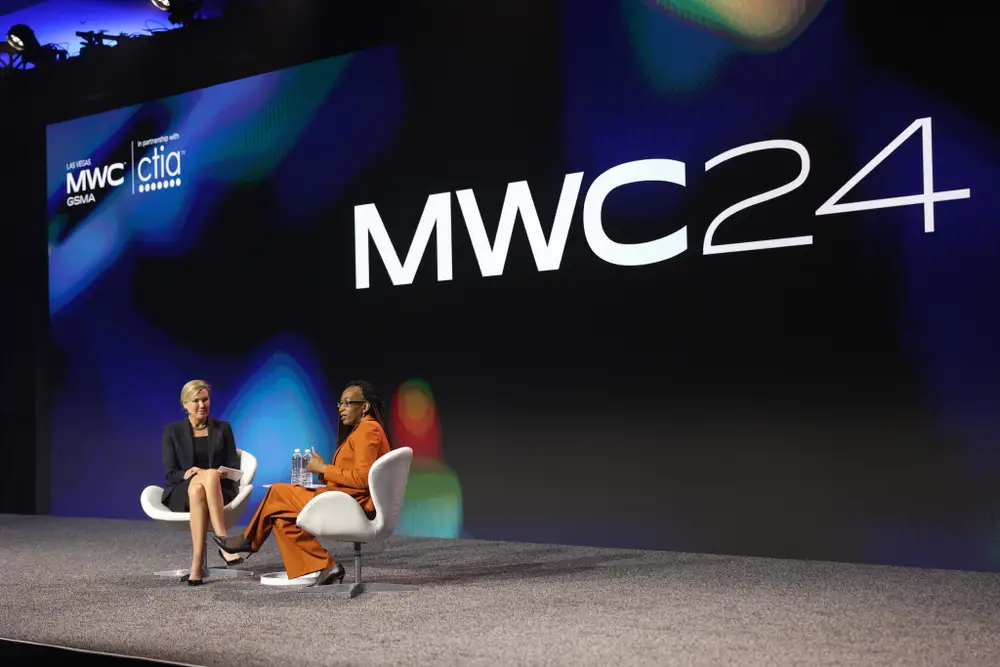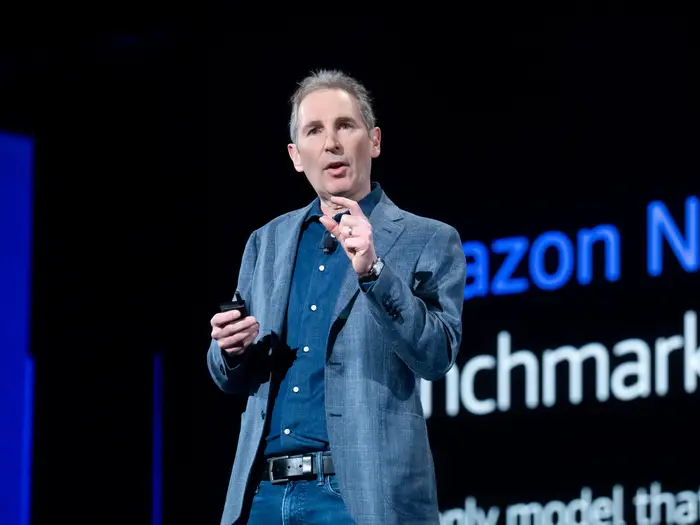Military and defense leaders explain how 5G and Open RAN are helping solve networking challenges

Rebecca Gray, SVP & GM Military, Boingo Wireless (left), and Venice Goodwine, chief information officer of the US Department of Air Force (right), speak at MWC 2024.
5G networks are opening up new possibilities for many industries, and military and defense are no exception.
US military and defense leaders spoke at the mobile communications trade show MWC Las Vegas 2024 last week about how technologies like 5G and Open Radio Access Network, or Open RAN as it’s more commonly known, offer critical support for their operations.
“It’s not just what we consider critical infrastructure — your water, power, fuel, gas,” said Venice Goodwine, the chief information officer for the Department of the Air Force. “We’re now expanding that definition to mean critical infrastructure is the network as well because no planes take off from any installation to do any mission without IT.”
“That is why 5G is important to us, because it’s global,” she added.”It allows me to move throughout the enterprise, whether that’s at home, whether that’s in the office, whether that’s in a hotel, whether that’s ‘barracks to the battlefield’ is what we like to say. We need multimodal transport wherever, and that is what this gives us.
Goodwine also talked about the significance of secure, resilient connectivity for the Air Force’s 180 installations.
“Resiliency for me is, under attack in a contested environment, do I have the ability to still operate my mission?” she said. “And what 5G gives me and these different capabilities is I no longer have to think about just one type of mode. I now have diversity in my transport mechanisms so it doesn’t matter to me what the signal looks like. If it allows me to transmit 1s and 0s and get data from point A to point B and to allow command and control for my combatant commanders, mission done.”
According to Juan Ramirez, the director of the 5G cross-functional team for the Department of Defense, the agency aims to deploy 5G at all of its installations by the end of 2028 and sees many use cases for the technology.
“5G networks will enable automated guided vehicles, port and airfield operations, and cutting-edge telemedicine such as remote access to specialists and rapid creation of field hospitals,” Ramirez said.
Tom Rondeau, the Department of Defense’s principal director for FutureG, also spoke of the department’s investments in Open RAN, an industry initiative to create greater flexibility and interoperability than traditional RAN architecture.
“We need to be part of that edge compute. We need to be part of the integration of the network and the application,” said Rondeau. “So looking at this from the perspective of how do we actually manipulate these systems internally, we’ve gone 100% in on Open RAN as our solution. We have a perspective of how Open RAN is the basis for taking advantage of these technologies and pushing us into the 6G era.”
The Department of Defense is working with academic and industry leaders on Open RAN to bring its communications systems into a new era, he said.
“When we look at the wireless networks and how important communication is to this ability to fight wars and to be relevant and to advance our capabilities and concepts, we have to be more innovative,” said Rondeau. “We have to be more adaptive.”






